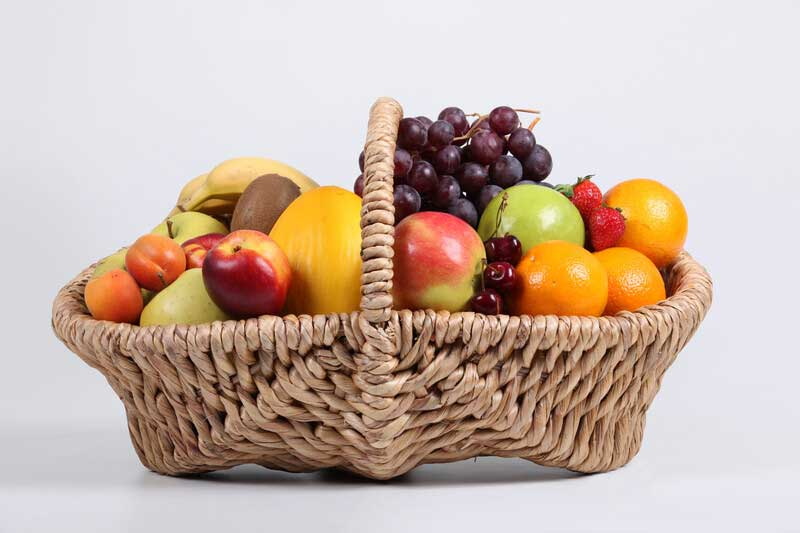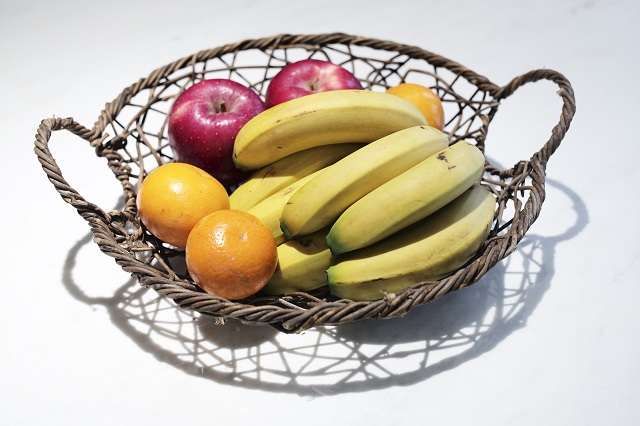Views: 222 Author: Tomorrow Publish Time: 2025-02-13 Origin: Site









Content Menu
>> Step 3: Building Up the Sides
● Practical Uses for Your Fruit Basket
● FAQ
>> 1. What materials are best for weaving a fruit basket?
>> 2. How long does it take to weave a fruit basket?
>> 3. Can I use synthetic materials for basket weaving?
>> 4. Do I need any special tools for basket weaving?
>> 5. Where can I find more resources on basket weaving?
Weaving a fruit basket is not only a practical skill but also an enjoyable and creative craft. This article will guide you through the entire process of weaving a fruit basket, from selecting materials to completing your masterpiece. Whether you are a beginner or have some experience in basket weaving, this comprehensive guide will provide you with detailed instructions, tips, and techniques to create beautiful fruit baskets.

Before starting your weaving project, gather the following materials:
- Natural Fibers: Willow, reed, or raffia are excellent choices for basket weaving. Each material has its unique characteristics that affect the basket's final look and durability.
- Tools: Scissors, a knife (for cutting), and a bowl of water (to soak the fibers if they are dry).
- Base Material: Thick willow shoots or other sturdy materials to form the base of your basket.
- Weaving Material: Thinner strips of your chosen fiber for the actual weaving process.
1. Select Your Base Material: Choose six thick pieces of willow or your preferred material, each about 12 to 15 inches long.
2. Create the Base Structure: Lay three pieces parallel to each other, then take the remaining three and place them perpendicular to form an "X" shape in the center. This will act as the spokes of your basket.
1. Insert Weavers: Take two thin strips of your weaving material and thread them through the base structure. Start weaving by alternating between going over and under the spokes.
2. Twist and Twine: As you weave, twist the weavers around each spoke tightly. This technique will help maintain the shape of your basket.
1. Continue Weaving Upwards: Once you have established a solid base, begin weaving upwards by continuing to alternate between over and under the spokes.
2. Add New Weavers: As you weave higher, you may need to splice in new weavers. To do this, simply overlap the ends of the old and new weavers and continue weaving.
1. Trim Excess Material: Once you've reached your desired height, trim any excess spokes at the top.
2. Secure Your Work: Use a small amount of glue or twine to secure any loose ends and give your basket a polished look.

- Soak Materials: Soaking your materials in water can make them more pliable and easier to work with.
- Practice Techniques: Familiarize yourself with different weaving techniques such as twining, plaiting, or random weaving for varied designs.
- Be Patient: Weaving takes practice; don't rush through it. Enjoy the process!
For a visual guide on how to weave a fruit basket, check out this video tutorial:
1. Skipping Soaking: Failing to soak your materials can lead to breakage during weaving.
2. Inconsistent Tension: Uneven tension can cause your basket to warp or become misshapen; always maintain consistent pressure while weaving.
3. Neglecting Measurements: Not measuring your spokes or weavers can result in an unbalanced design; always plan ahead!
Once you've mastered basic fruit basket weaving, consider trying out these creative variations:
- Colorful Baskets: Use dyed fibers or paint natural materials before weaving for vibrant designs.
- Different Shapes: Experiment with different shapes such as oval or square baskets by adjusting your base structure accordingly.
- Layered Designs: Incorporate multiple layers of different colors or materials for added texture and visual interest.
Your newly woven fruit basket can serve various purposes beyond just holding fruits:
- Gift Basket: Fill it with goodies like homemade jams, chocolates, or baked goods for thoughtful gifts.
- Decorative Storage: Use it as storage for small items like keys, mail, or craft supplies around your home.
- Centerpiece Display: Place it on your dining table as a centerpiece filled with seasonal fruits or flowers.
Weaving a fruit basket is a rewarding project that combines creativity with practicality. By following these steps and utilizing various techniques, you can create beautiful baskets that are perfect for gifts or home decor. Remember that practice makes perfect; don't hesitate to experiment with different materials and styles.

Natural fibers like willow, reed, or raffia are ideal for creating sturdy and aesthetically pleasing baskets.
The time required varies based on experience and complexity but typically ranges from 2 to 4 hours.
While synthetic materials can be used, natural fibers offer better flexibility and aesthetic appeal.
Basic tools like scissors and a knife are sufficient; however, specialized tools can enhance your crafting experience.
Many online platforms offer courses and tutorials on various basket weaving techniques; websites like Mother Earth News provide excellent resources.
[1] https://www.motherearthnews.com/diy/forager-basket-weaving-tutorial-zm0z19jjzbut/
[2] https://www.istockphoto.com/videos/basket-weaving
[3] https://www.matttommey.com/blog/the-5-best-basket-weaving-techniques-using-natural-materials
[4] https://www.mypitaya.com/100320.html
[5] https://petalplum.com.au/blog/make-your-own-basket-how-to-weave-with-raffia-fabric
[6] https://www.youtube.com/watch?v=MoNP_6DjTYA
[7] https://paradisefibers.com/pages/basket-weaving-resources
[8] https://iphysresearch.github.io/blog/post/writting/writting-in-the-sciences/unit3/
[9] https://www.youtube.com/watch?v=Rd5S-N6lnWY
[10] https://www.matttommey.com/basket-weaving-techniques.html
[11] https://github.com/LianjiaTech/BELLE/blob/main/data/1.5M/zh_seed_tasks.json